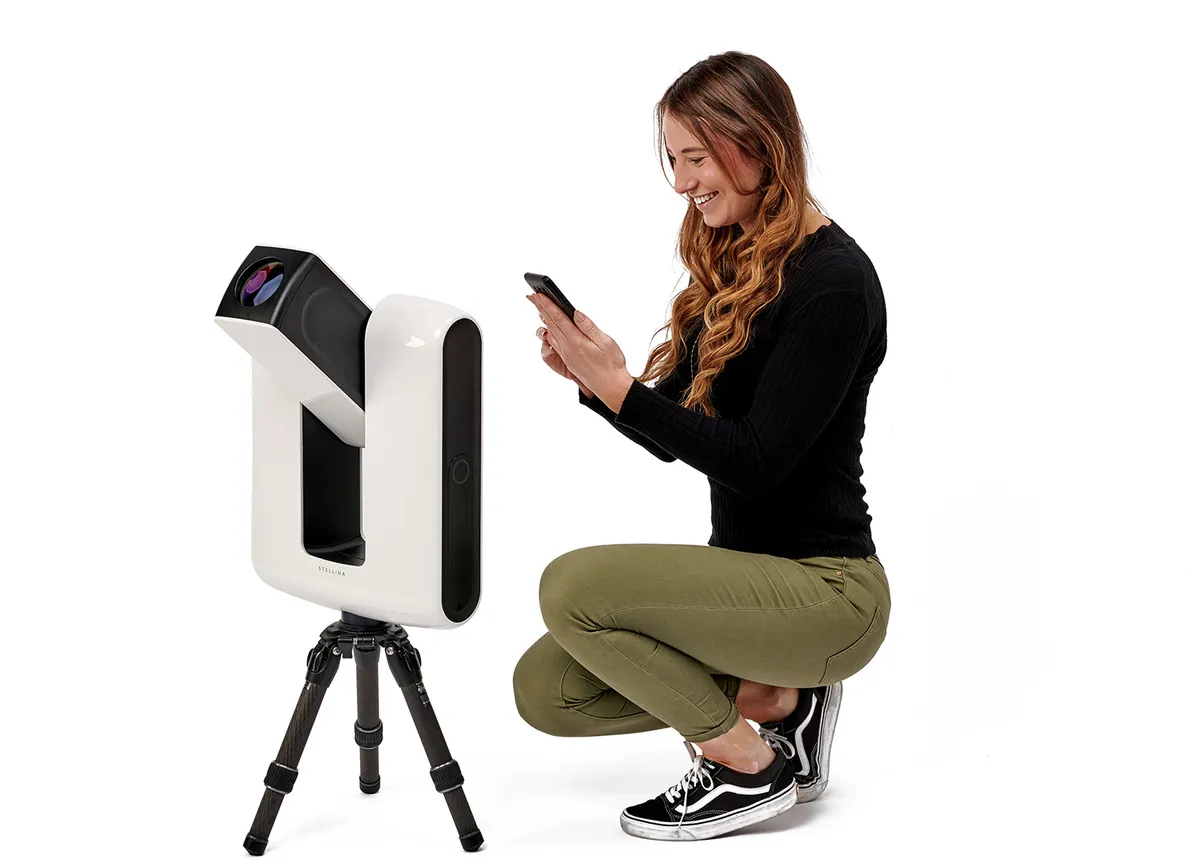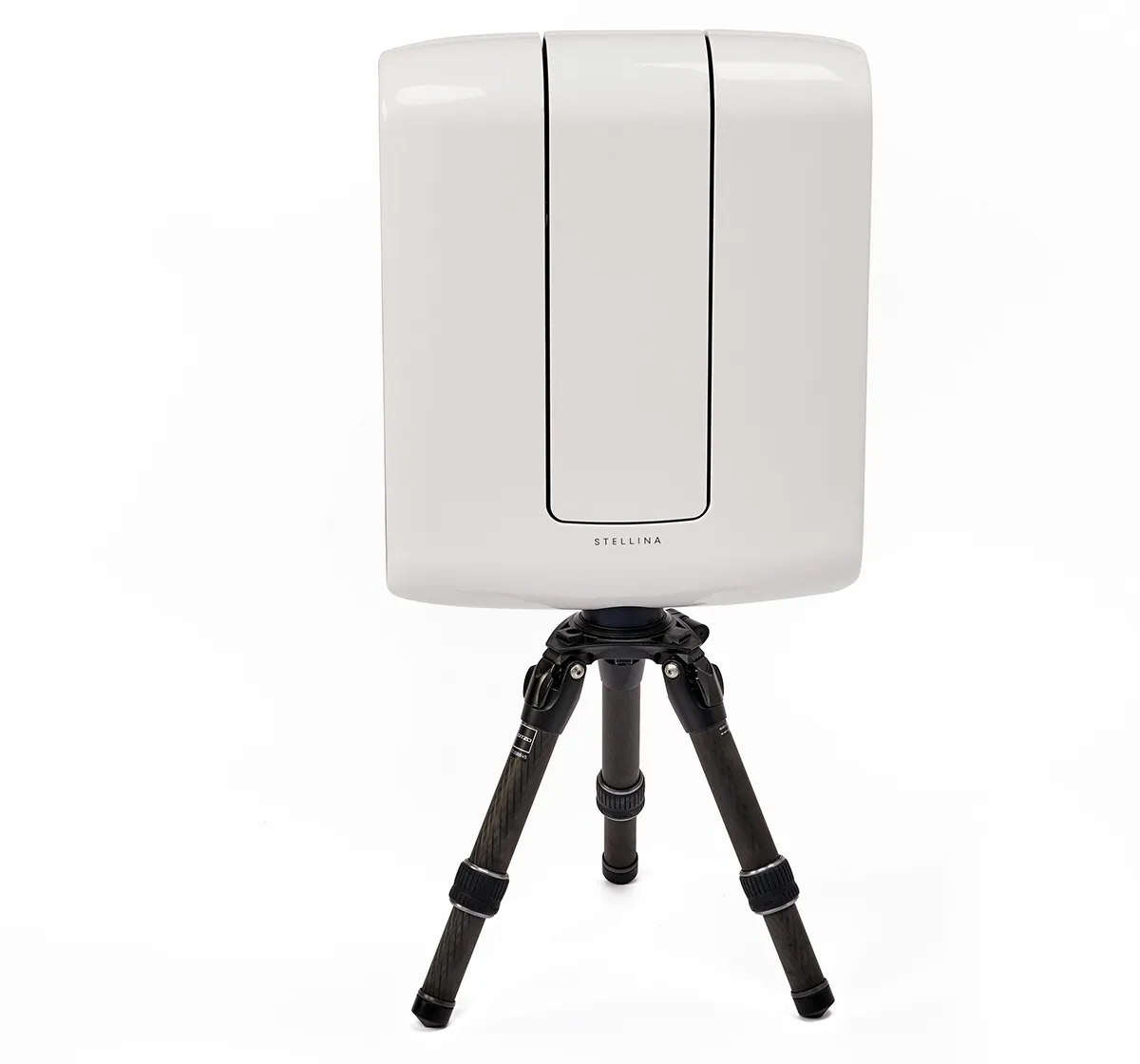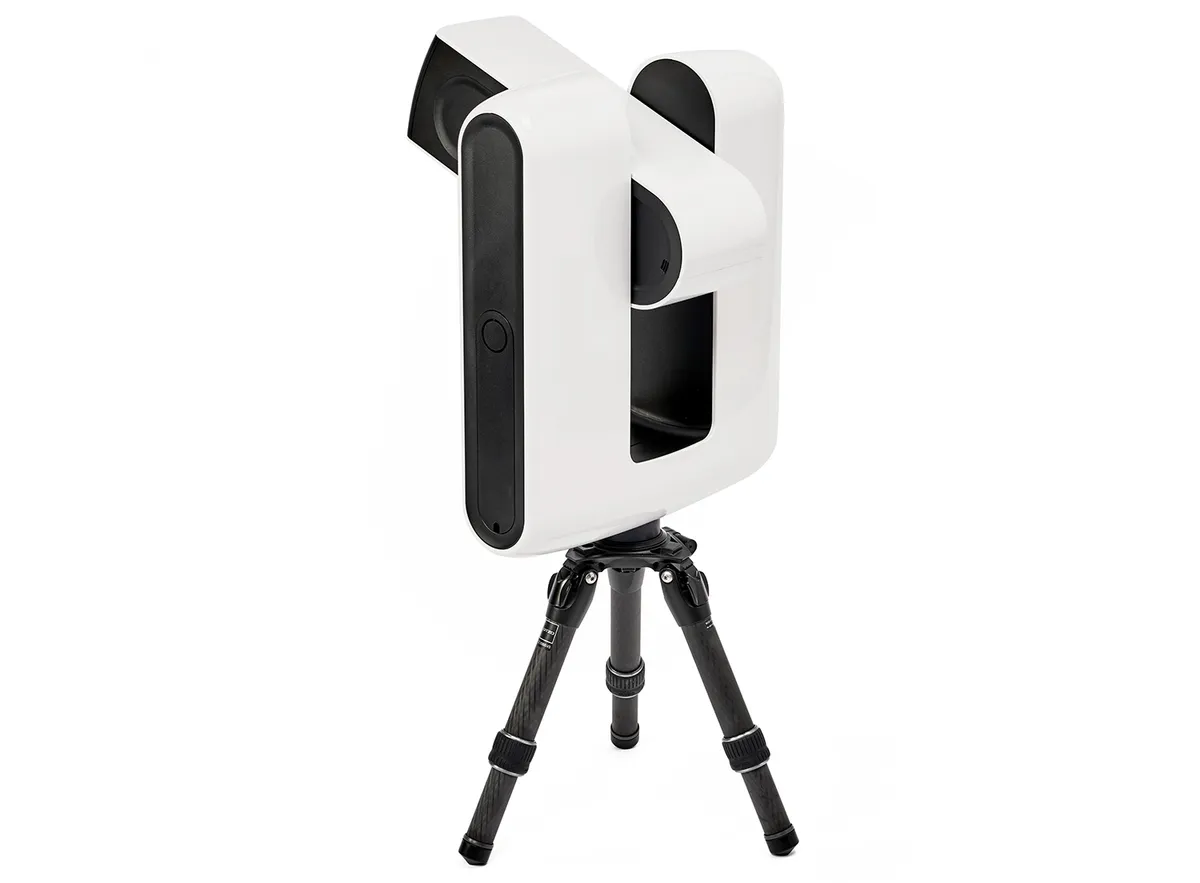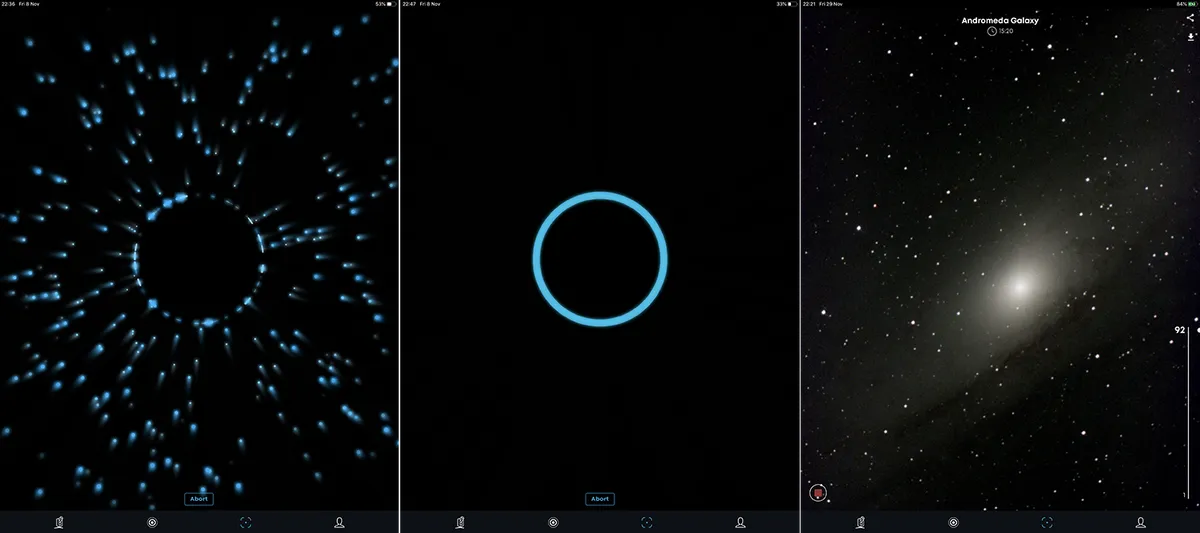Stellina is a fully automatic altazimuth system that can take images of deep-sky objects without any of the standard paraphernalia of guide scopes, equatorial mounts, laptops and external cameras. It appears to be everything you need in a compact, sleek, white and black rectangular casing, which is mounted on a tabletop tripod.
Stellina also promises to image the Universe with hardly any input bar a couple of taps on a tablet or smartphone screen.
The setup certainly looks smart: a minimalist box with an optical telescope and an altazimuth fork mount fully computerised to track the night sky.The scope is an 80mm ED doublet refractor of 400mm focal length giving f/5, with an integrated dew heater to prevent it misting up.
At the base of the telescope is a 6.4MP Sony IMX178 sensor with a CLS (city light suppression) light-pollution filter just in front of it, so even light-polluted skies can give reasonable results.
Assembly was quite easy, mounting it on the ‘Gitzo Systematic’ short tripod, while the bubble level is helpful to ensure the system is level for best operation.

Power comes from a 10,000 mAh battery pack which is plugged into the battery compartment via a USB-C port. Here there are also two USB-A ports for adding flash drives to store raw images.
Next comes the electronic setup. Download the Stellina app for Android or Apple iOS and turn on the Stellina via the round button on one side, which turns blue.It will create a Wi-Fi network which enables you to connect your device to it, before proceeding to the initialisation screen.
Up to 20 other devices can be connected to share the experience, although one remains the actual controller, which is useful for groups at star parties.
Stellina will then do all the set-up work for you by using GPS to set time, date and location, open the telescope and search the sky for a starry field, then auto focus the optics.Once done it is ready for you to choose a target to image.
It should be noted that Stellina has an operating temperature range of 0–40°C, so observers based in colder northern climates may not be able to use it as much as they’d like if the temperature drops below freezing.

Unlike most telescopes, there is no place for an eyepiece. Instead, once Stellina is directed to a deep-sky target it spends a little time (roughly a couple of minutes) locating, then plate solving, the starfield to ensure the object selected is centred.
It then automatically begins to take and stack live images. These appear on your smart device screen in a process known as ‘live stacking’.
Using the integrated de-rotator in the telescope, the system compensates for the rotation of the field of view automatically while the onboard computer rejects any poor images, only stacking the best to produce the final image.
The Stellina app has a selection of around 100 deep-sky targets, plus the Moon. The developer, Vaonis, tells us there are plans to expand the database to include more targets, plus members of the Solar System.
Each target has optimised settings which cannot be changed, but when it’s left to do its work the Stellina does produce worthy results.

Purist astrophotographers would probably prefer more control. However, you can stop the imaging via the app and save the image either to the device or share via social media later, while the raw images are stored on the flash drives automatically and you can process them yourself.
Stellina certainly lives up to the promise of its futuristic design. It made imaging the cosmos an easy and almost effortless task and the current list of targets will keep you busy for a while.
With potential upgrades hinted at by Vaonis, it may be the only system you need.While €3,999 may seem a high price, avid astrophotographers can easily spend that much on building up their equipment.
So, it could be seen as making astrophotography available for anyone regardless of experience – as long as you can meet that price tag.
Stellina's deep-sky image quality
Impressively, Stellina does what it says it can do. It can take deep-sky astro images of many of the brighter deep-sky objects – from galaxies to clusters to nebulae – along with the Moon.Once the target is centred, the app shows a cascade of light falling to the centre of the screen in a hypnotic animation.
When Stellina identifies the first good image, the cascade transforms into a blue circle which fades away to reveal the first crude picture.
As time proceeds the deep-sky image builds up; you can either go with the suggested time, allow it to continue past it, or stop the live stacking early if you are happy enough with the image.
We captured a range of targets, including the Orion Nebula, M82, the Cigar Galaxy, M1, the Crab Nebula and the Andromeda Galaxy.
Although Stellina is not ideal for imaging large objects like M31, a mosaic feature is being looked into for summer 2020, so something like the whole of the Andromeda Galaxy could eventually be covered in full.

Stellina's outstanding features
Optics
At the core of the optical system lies an 80mm ED doublet refractor with a focal length of 400mm giving a focal ratio of f/5. The front objective has an integrated dew heater to prevent dewing and the internal tube is baffled to help cut out stray light.
Sensor
Deep in the optical system lies the sensor, which is a Sony IMX 178 with a resolution of 6.4 megapixels, equivalent to 3,086x2,076 pixels. It’s particularly sensitive in the near-infrared spectrum, which is useful for imaging nebulae. A CLS (city light suppression) filter, just in front of it, enables imaging in urban light-polluted urban skies.
Integrated de-rotator
With an altazimuth system it cannot follow the sky in an arc, keeping the same orientation of the view as an equatorial mount can, so an internal integrated de-rotator is included. This worked perfectly allowing for the in-built computer to stack multiple images live, often for over an hour if needed.
Stellina body
The Stellina body houses the computer, Wi-Fi adaptor and altazimuth Go-To system in a minimalist white and black fork mount. Despite packing so much in and housing the optical system, it is surprisingly lightweight and easy to handle. It is also quiet, belying the complex operations taking place.
Stellina app
Stellina is controlled through the app which has both iOS and Android versions, downloadable from their respective stores. Once Stellina is turned on, your device connects to its Wi-Fi and allows you to initialise and control the scope. The images it takes are downloaded to your device too, and can be saved from there.
Vital stats
- Price €3,999
- Optics 80mm ED doublet refractor
- Focal length 400mm (f/5)
- Mount computerised robotic altazimuth
- Ports 1 USB type-C (power), 2 USB type-A (image storage; not included)
- App control Stellina app; targets include galaxies, nebulae, clusters and the Moon
- Sensor Sony CMOS IMX178,
- Extras Integrated dew heater and de-rotator, fabric shroud, bubble level, Gitzo Systematic tripod, 10,000 mAh battery, cables
- Weight 11.2kg
- Supplier Vaonis
- Tel +33 467 593022
- https://vaonis.com
This review originally appeared in the February 2020 issue of BBC Sky at Night Magazine.
